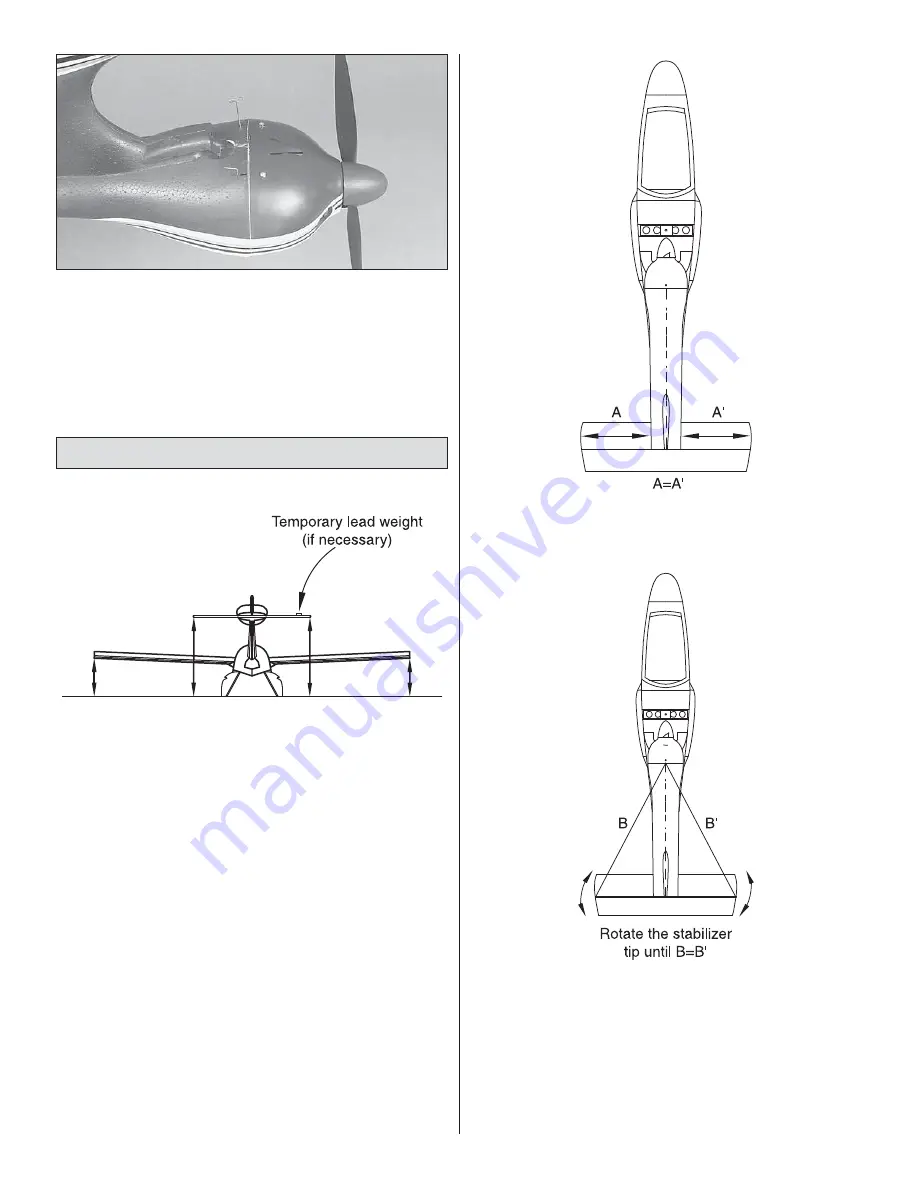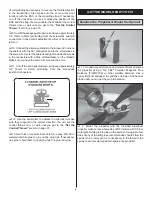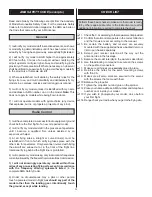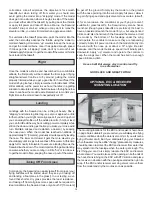
7
7
❏
10. Drill the holes for the remaining two cowl mounting
screws and insert the screws. Remove the pins.
Later, after the model has been completely fi nished, the
spinner will be glued to the prop washer with a dab of
RTV silicone or white glue.
Mount the Horizontal Stabilizer & Fin
❏
1. Temporarily mount the wing to the fuselage. With the
plane resting in its building cradle, measure the distance
from the bottom of both wing tips down to your workbench.
Adjust the plane in the cradle until both distances are equal.
❏
2. Test fi t the horizontal stabilizer (stab) into the fuselage.
Center it as best as you can by eye. Same as you measured
the distance from the wings down to the workbench, measure
the distance from both stab tips down to the workbench. If
the distances are not equal, place a small amount of weight
on the “high side” of the stab until you can get it level–use
coins or the stick-on lead weight you will be using to balance
the model later. This is how much weight will have to be used
when actually gluing the stab into the fuselage.
Note: It’s best to glue the horizontal stabilizer into the
fuselage with slow-setting glue such as epoxy, waterproof
white glue or R/C-56 so that there will be time to accurately
position and center the stab before the glue dries.
❏
3. Apply glue to the unpainted area on the top and bottom
of the stab. Slide the stab into position and wipe off any
excess glue. Proceed immediately to the next step.
❏
4. Taking accurate measurements, center the stab in the
fuselage from side-to-side.
❏
5. Square the stab with the centerline of the fuselage by
taking accurate measurements from both tips to the seam
between the two fuselage halves on the top of the motor pod
behind the cowl. Rotate the stab as shown to equalize both
sides. Make sure the stab has remained centered laterally.
❏
6. If any weight was required to level the stab with your
workbench, position the weight and re check the measurements.
Do not disturb the model until the glue has hardened.


































